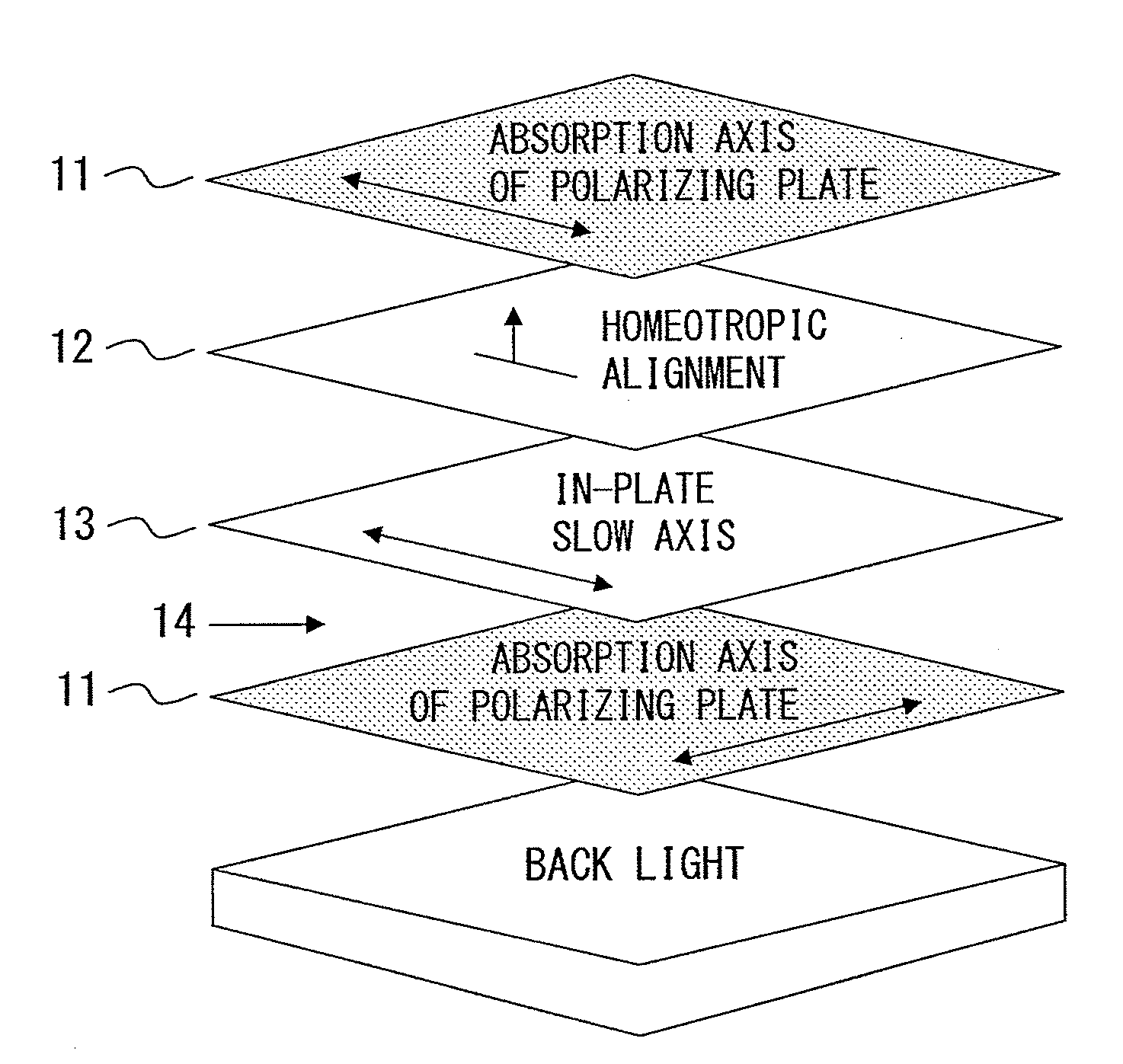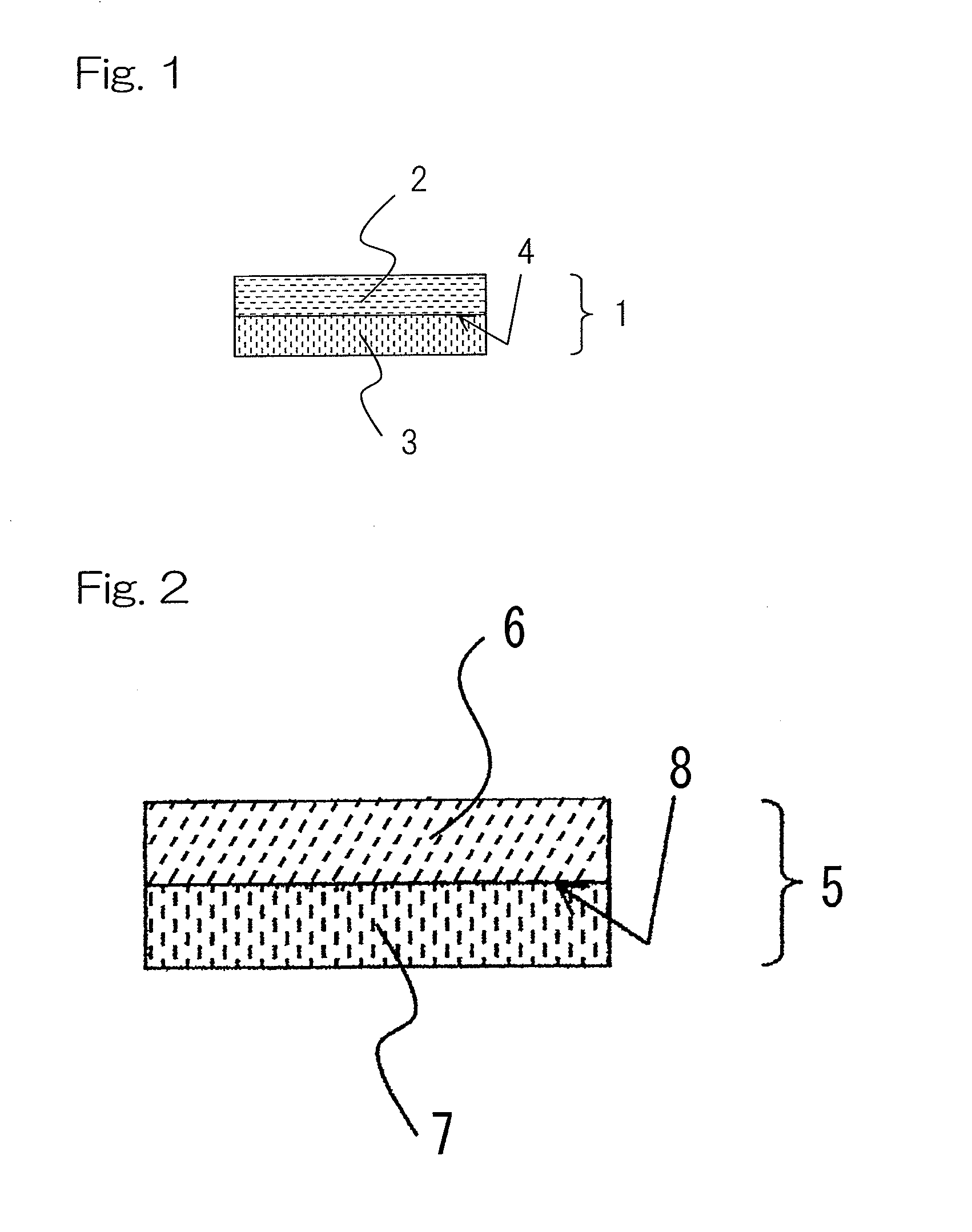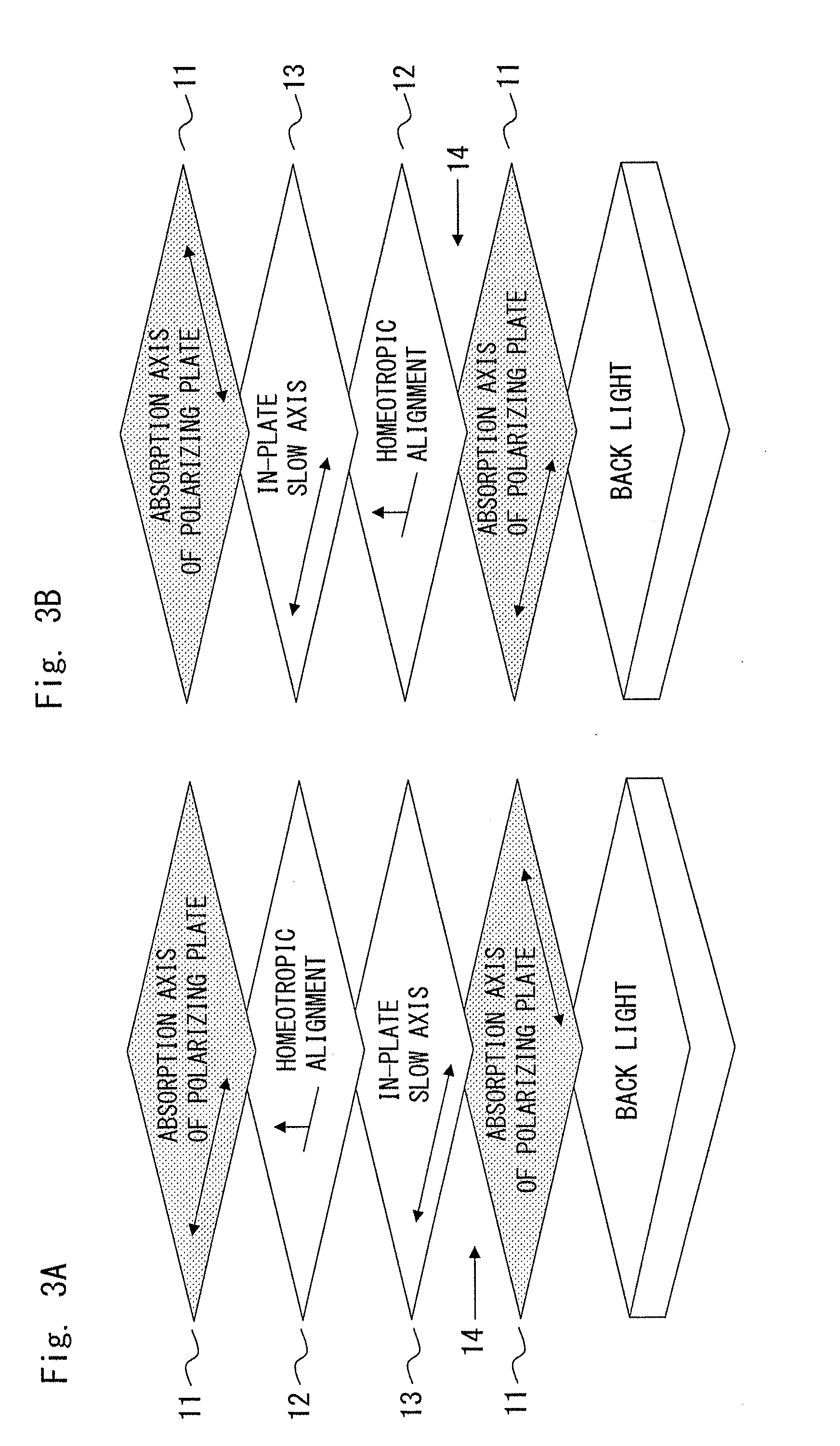Optical film laminate, method for producing the same, and liquid crystal display panel using the same
- Summary
- Abstract
- Description
- Claims
- Application Information
AI Technical Summary
Benefits of technology
Problems solved by technology
Method used
Image
Examples
example 1
[0125]The polymer 1 was dissolved in cyclohexanone, and thereto was added 4,4′-bis(diethylamino)benzophenone available from Tokyo Chemical Industry Co., Ltd. in the proportion of 0.02 part by weight relative to 1 part by weight of the polymer 1 to prepare a solution 1. The solution 1 was spin-coated at a thickness of about 1.5 μm onto a polyethylene terephthalate film (PET film). After drying the resultant material at a room temperature (about 25° C.), the material was heated to 100° C. followed by cooled to form a first coated layer. Next 4.2% by weight of the polymer 2 and 0.8% by weight of the low molecular material 1 were dissolved in toluene, and thereto was added 4,4′-bis(diethylamino)benzophenone available from Tokyo Chemical Industry Co., Ltd. in the proportion of 0.02 part by weight relative to 1 part by weight of the total amount of the polymer 2 and the low molecular material 1 to prepare a solution 2. The solution 2 was spin-coated at a thickness of about 1.8 μm onto the...
example 2
[0128]The polymer 3 was dissolved in 1,4-dioxane to prepare a solution 3. The solution 3 was spin-coated at a thickness of about 1.5 μm onto a polyethylene terephthalate film (PET film). After drying the resultant material at a room temperature (about 25° C.), the material was heated to 130° C. followed by cooled to form a first coated layer. Again the solution 3 was spin-coated at a thickness of about 2.0 μm onto the first coated layer and dried to form a second coated layer on the first coated layer. Here, without light irradiation to the first coated layer and without fixing its alignment (photosensitive groups are still un-reacted), the second coated layer was formed on the first coated layer.
[0129]Subsequently, light from a high pressure mercury vapor lamp is converted into a linear polarized light by using Gran-Taylor prism, and then the linear polarized light is irradiated to the coat layers for 300 seconds. The irradiated material is heated at 130° C., followed by gradually ...
example 3
[0137]In Example 1, without light irradiation to the first coated layer as well as without fixing its alignment (photosensitive groups are still un-reacted), a second coated layer is formed on the first coated layer. Thereafter, the coated layers were arranged at an inclined angle of 20° to a horizontal plane and irradiated with linear polarized light converted from light from a high pressure mercury vapor lamp for 300 seconds in the perpendicular direction to the horizontal plane (i.e., electric-field oscillating plane of light intersects perpendicularly to the tilt axis of the film). The irradiated material is heated at 100° C., followed by being cooled gradually for 30 minutes to the room temperature to induce the alignment. Further, light from a high pressure mercury vapor lamp is irradiated without converting into linear polarized light to the layers for 1,500 seconds in order to fix the alignment.
[0138]Thus obtained coated layers could be transferred from the PET support to a ...
PUM
| Property | Measurement | Unit |
|---|---|---|
| Photosensitivity | aaaaa | aaaaa |
Abstract
Description
Claims
Application Information
 Login to View More
Login to View More - R&D
- Intellectual Property
- Life Sciences
- Materials
- Tech Scout
- Unparalleled Data Quality
- Higher Quality Content
- 60% Fewer Hallucinations
Browse by: Latest US Patents, China's latest patents, Technical Efficacy Thesaurus, Application Domain, Technology Topic, Popular Technical Reports.
© 2025 PatSnap. All rights reserved.Legal|Privacy policy|Modern Slavery Act Transparency Statement|Sitemap|About US| Contact US: help@patsnap.com



